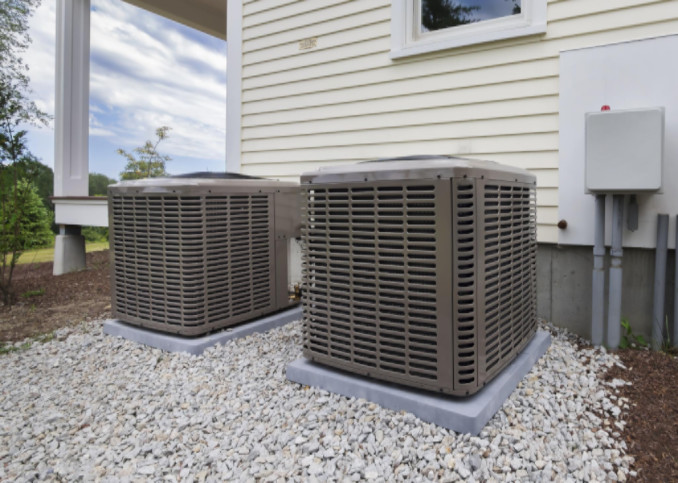Air conditioners use a refrigerant to absorb heat from indoor air and release the heat into the atmosphere. The coolant circulates continuously to remove more heat from the house until the temperature of your home equals the temperature set on the conditioner.
Faulty condenser and evaporator coil
Residential and commercial air conditioning systems are equipped with two coils to handle the cooling sequences. The evaporator coil is made from materials that conduct heat efficiently and is placed outside the condensing part. Heat transfer occurs here. The refrigerant inside the condenser evaporates, absorbing the heat from the air that crosses from the blower. The condenser is located outside where heat can dissipate to the exterior atmosphere as the hot gas is cooled to liquid state under high pressure.
The ideal running of an air conditioner is optimum when the level of the refrigerant is maintained at a certain threshold specified by the manufacturer. However, a lower level of coolant indicates that the system was undercharged during installation or it is leaking. The evaporator and condenser coils are prone to leaking.
It helps to be able to identify leak problems before you can seek the assistance of professionals.
Leaking coils
A common challenge that most people encounter with the air conditioning is a system that is losing refrigerant via a small leak in the machine. Larger leaks are relatively easier to find in the system because they leave some visible evidence such as an oil stain, crack or hole in a coil. Occasionally, when you try to replenish the refrigerant, you might hear hissing sounds of the escaping Freon.
Nevertheless, any form of leak can harm the electronic components or your system and render it dysfunctional. Coolant leaks are not only dangerous for your air conditioner, but they also harm the environment. This means that any leaks should be promptly fixed before serious damages occur.
Call a technician to repair the leaks
Simple refilling the refrigerant will not permanently solve the leaking problem. The added coolant will still leak during the operations of the system. You can achieve the best results by contacting a well-trained HVAC technician to repair any leak. After a successful repair, the technician will test the fix and then fill the system with the recommended amount of refrigerant.
Overcharging or undercharging will have an adverse impact on the efficiency and performance of the system. Air conditioners offer the best performance when the refrigerant level is maintained at the level specified by the manufacturer.
How the leaking problem occurs
The moisture and volatile organic compounds in your home combine to create an acid. These volatile organic compounds originate from aerosols, household cleansers, air fresheners, glues and other compounds. The formed acid settles on the evaporator coils causing slow corrosion. The corrosion results in very tiny holes on the coil.
It is hard to detect the small holes until the future problem of a refrigerant leak sets in. Repairing the problem is costly, and it is, therefore, essential to catch the problem early on.
How to avoid AC coil leaks
To avoid leaks in your AC coils, start by preventing the formation of the acid which causes the corrosion. You can achieve this in your home by keeping the coils clean to avoid acid build-up. You should also shun away from using volatile organic compounds in your home.
If you cannot prevent the utilization of these compounds, then encourage the plenty flow of air into your home. Another option would be installing an air purifier which utilizes ultraviolet light to neutralize volatile organic compounds. Cut down the internal air moisture by employing house dehumidifier to avoid the formation of acid.
Above all, have your air conditioning unit professionally inspected at least once a year to extend the lifespan and efficiency of your heating and cooling system.

